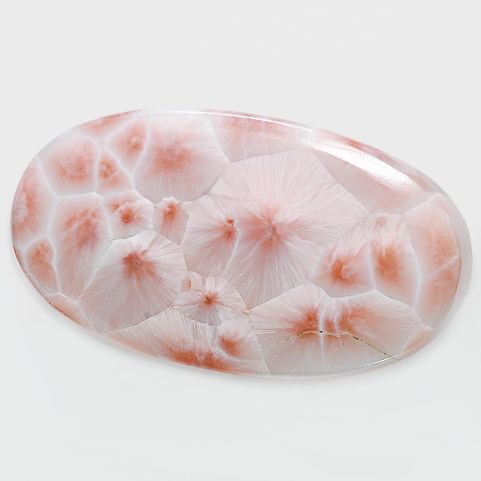_____________________
At the beginning of 2020, a pink mineral with an attractive texture similar to the pectolite variety "larimar" was found in veins and fissures of a local basalt on the Indonesian island of Nusa Kambangan (Central Java). The stone was promptly marketed under the trade name "pink larimar". Other sources on the Internet state that the zoned mineral aggregates are the mineral thomsonite. The EPI-LAB had the opportunity to examine this gemrock more closely.
Rock analysis

Fig. 2: The Raman spectrum of the measured sample (green) corresponds exactly to the reference spectrum of natrolite (black). In comparison, the spectrum of thomsonite (red) is slightly shifted and has additional peaks (blue marking).
© EPI-Labor
The microscopic appearance of a polished cabochon (Fig. 1) shows radial growth structures with white edges and a pinkish-brown core area. The Mohs hardness was determined to 5½. Both the pectolite variety "Larimar" and the zeolite mineral thomsonite are in this same hardness range. The density was determined to be 2.2. As this is significantly lower than that of a pectolite (2.8 - 2.9) "pink Larimar" has been ruled out.
The Raman spectrum of the sample (green) did not correspond to thomsonite (red), but to natrolite (black). Therefore the measured sample could be clearly identified as natrolite..
Conclusion
The Indonesian material does not match the pectolite variety "Larimar" nor thomsonite.
It is a natrolite aggregate that formed secondarily in a volcanic-basaltic environment. The formation of zeolites in basaltic rocks is nothing unusual and has been documented in many places on Earth. However, this natrolite aggregate has gained a place in the world of gemrocks due to its special structure and attractive coloration.




